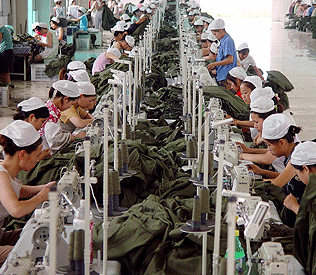
DESPITE global headwinds, the Association of Southeast Asian Nation (Asean) Macroeconomic Research Office (Amro) maintained its growth and inflation forecast for the Philippines this year and in 2024.
In a briefing on Tuesday, Amro Chief Economist Hoe Ee Khor said the Philippines is still expected to post a growth of 6.2 percent this year and 6.5 percent next year, while inflation is seen averaging 5.9 percent in 2023 and 3.8 percent in 2024.
Khor said the Philippine economy remains a service-oriented one and may be insulated from the slowdown of the trade of goods that is expected in other Asean economies.
“The Philippines has done relatively well in terms of sustaining its growth. I think that’s partly because the structure of the economy is quite different from other Asean countries,” Khor said in a briefing on Tuesday.
“The other economies are much more dependent on manufacturing goods export, whereas in the case of the Philippines, it’s a much more service-driven economy. And because of that, I think it has not been affected as much by the external headwinds and has benefited from the recovery of the services sector,” he explained.
Some of the medium-impact risks identified by Amro that could affect Asean economies, albeit in varying degrees until the next two years, are the spike in global commodity prices and the faltering recovery in China.
The high-impact risk that could affect the region for two years is the recession in the United States and Europe. In the next two to five years, the high-impact risk would be the economic decoupling between the US and China.
Financial spillovers from tighter US monetary policy, meanwhile, is deemed a low-impact risk by Amro. This is expected to have an impact within two years.
Perennial risks to the region, AMRO said, include the climate change transition; natural disasters; cyber attacks; and pandemics.
“Downside risks to the region’s outlook have receded since April, but we are not out of the woods yet,” Khor cautioned. “Heightened financial stress from tighter US monetary policy is a risk that the Asean+3 policymakers must continue to guard against.”
The Asean +3 region is expected to grow by 4.6 percent this year, up from 3.2 percent last year.
Although the ongoing weakness in global trade has prompted a slight reduction in the Asean growth forecast for 2023 to 4.5 percent from last April’s projection of 4.9 percent, this will be offset by improving prospects in the Plus-3 economies.
Amro revised its 2023 inflation forecast for the region—excluding Lao PDR and Myanmar—to 3.0 percent, slightly lower than its previous forecast of 3.4 percent.
Growth is expected to ease slightly to 4.5 percent in 2024, while inflation is projected to moderate further to 2.4 percent.
Manulife’s take
In a separate briefing, Manulife Multi-Asset Solutions Team Global Macro Strategy Co-Head Sue Trinh said the aggressive monetary stance of the Bangko Sentral ng Pilipinas (BSP) is one of the biggest risks that could dampen growth in the Philippines.
Trinh also added that both headline and core inflation remain elevated. Based on the latest data from the Philippine Statistics Authority (PSA), headline inflation was at 5.4 percent and core inflation was at 7.4 percent.
“Growth is dampened by a combination of factors; the first is that BSP’s had the most aggressive tightening cycle in the region over 400 basis points but headline inflation core inflation volatility remains rather acute,” Trinh said.
“BSP has also discussed or stated quite clearly that inflation risks [remain] and its eyes are heavily tilted to the upside and that keeps the door open for further rate hikes,” she added.
However, despite this, Trinh still considers the Philippines the “most safe place” to park investments and one of the countries in Asia where it is good to “hide” from global uncertainties.
“The Philippines is the most safe place, [one of the most] dynamic in the region,” Trinh said.
“Our argument, our thesis from a macro perspective, is that Asia is really a good place to hide in these times of heightened uncertainty. The consensus is that Asia’s growth differentials will remain wide,” she also said.
Rate cuts looming—Oxford
Another good news that could be on the horizon are rate cuts, which according to Oxford Economics are expected sooner rather than later.
Oxford Economics believes rate cuts are looming given the expected slowdown in Asian economies, particularly South Korea and Thailand, which were significantly affected by the slowdown in goods export.
The balance of risks points to lower rates sooner rather than later. Inflation needs to come down a bit more—which it should—and the Fed needs to stop hiking—which we think is imminent—and Asian central banks are likely to look for the right opportunity to cut rates.
Last week, the BSP said this may not be enough reason to consider another pause or a rate cut in the next policy rate setting.
BSP Governor Eli M. Remolona Jr. told reporters that apart from inflation, the Monetary Board will also consider the country’s GDP growth rate as well as the next move of the US Federal Reserve.
Remolona stressed that the decision of the Federal Open Market Committee (FOMC) will be considered on the basis that it also provides data for the Monetary Board.
One important consideration in looking at the decisions of the FOMC, Remolona said, is the US Federal Reserve’s difference from the BSP.
